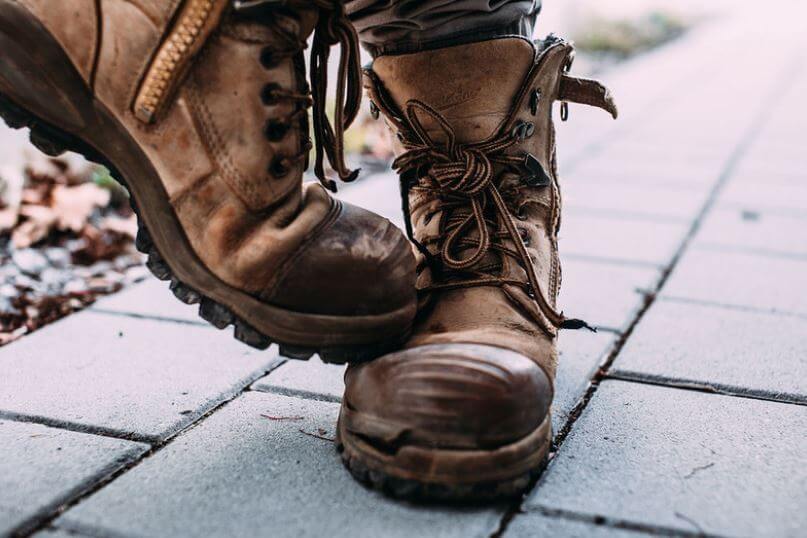Occupational foot injuries are a major problem for both employees and companies. Injury statistics from the National Safety Council reveal that more than 47,000 foot-related injuries in 2019 resulted in days away from work.
When a construction worker, for instance, sustains a foot injury, they have to stay in the hospital or at home to recover. As the injured worker is recuperating, the employer faces possible productivity loss and a delay in the project schedule.
Both parties, therefore, must make sure to prioritize foot protection, especially if the job involves working in a hazardous environment. One way to do so is to wear safety shoes, such as high-quality work boots.
Putting on these shoes can help avoid foot injuries in the following ways:
Table of Contents
Safeguards Feet from Extreme Weather
Cold weather can result in injuries, such as hypothermia and frostbite. Employees working in outdoor construction sites, as well as workers in refrigerated or wet environments, are at risk of developing frostbite on their feet.
Wearing the appropriate safety shoes, in conjunction with other measures, can keep the feet and the rest of the body warm and comfortable.
Minimizes Fatigue
Fatigue can be a real problem for employees who are required to stand all day. Muscles in the feet, legs, back and other areas of the body grow tired. This situation becomes worse when workers fail to wear the right footwear.
Safety shoes that offer arch support and adequate cushioning can ease the strain on the muscles and increase comfort. This means that workers will grow tired less quickly. Less fatigue will likely help them do their jobs more efficiently. Also consider copper compression socks to support the ankle, keeping circulation flowing which is great for long-term standing.
Protects Employees from Electrical Hazards
Electricity can be a health hazard in a workplace. Employees could face potential electric shocks that can harm their feet. They can also accumulate static electricity, which can result in electric sparks that can start a fire.
Workers can cut down the chances of an electrical workplace accident by putting on non-conductive safety shoes made from rubber, leather or other materials that do not conduct electricity.
Safeguards Feet from Punctures
Sharp objects, such as exposed nails on the ground, may be present in construction sites. This can puncture and injure the feet. Employees can avoid foot injury by putting on safety shoes equipped with thick materials and heavy-duty soles.
Prevents Slipping,Tripping and Falling
Companies usually implement housekeeping measures, such as anti-slip floor tapes, to minimize the likelihood of slips, trips and falls. Employees can further boost their safety by wearing shoes that offer extra protection against these mishaps.
An example is safety footwear that feels comfortable and fits well. This helps improve balance and reduce the likelihood of slips, trips and falls.
Apart from that, shoes equipped with appropriate traction can prevent falls in slippery environments. They also help keep workers from falling off ladders — a common accident when people fail to wear footwear with proper treads.
Protects Feet from Burns
The term “burns” isn’t just limited to fires that happen in the workplace. It can also be due to chemicals, molten metal splashes and other hazardous substances that could injure the skin on the feet. The right safety shoes can withstand these dangerous materials and prevent the feet from sustaining a burn. ;
Safeguards Feet from Flying and Falling Objects
Falling and flying objects are common in dynamic environments where many vehicles, equipment and people are working at once. Wearing protective safety shoes, such as steel toe boots, can prevent crushing injuries to the feet.
Tips When Choosing Safety Shoes
Getting safety shoes isn’t as easy as buying footwear equipped with safety features. Employees should also consider the following factors:
Fit
Workers should make sure that the safety shoe issued to them is the correct fit. This means that the footwear isn’t too tight. They should also be able to lace these shoes to a suitable fit. By wearing properly fitted safety shoes, employees can avoid painful pressure points and foot blisters.
Durability
This is a significant factor, especially if a worker needs footwear that can tolerate a high daily load. The upper portion of the safety shoes should be both lightweight and robust. What’s more, the soles should consist of durable material to support the wearer for extended periods.
Comfort
Safety shoes should come with a sufficient level of cushioning. Employees working on hard industrial floors should put on footwear with top-quality cushioning material. This allows them to stay comfortable. It also helps support the back, the joints and the whole body.
Wearing safety shoes can protect the feet of workers. Businesses should make sure to supply the appropriate foot protection equipment to boost safety and comfort in the workplace.

